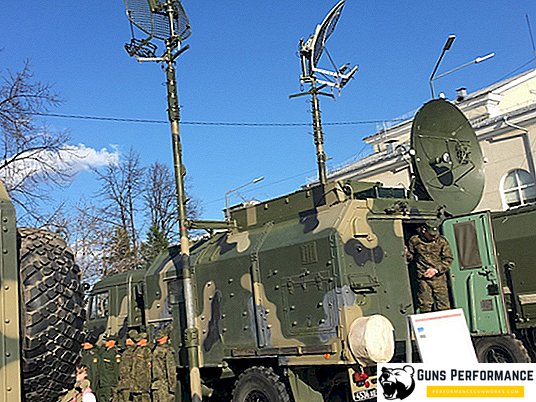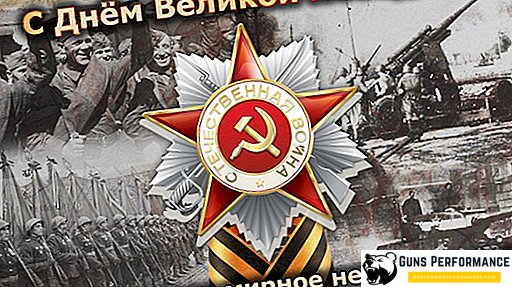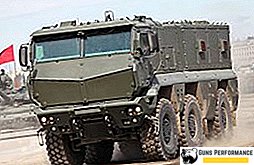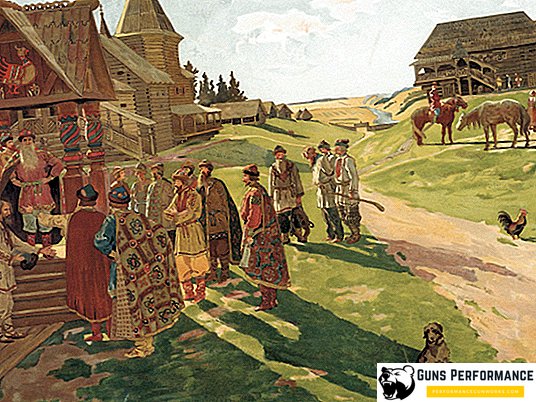
At present, the Slavs inhabit a colossal territory: from the Adriatic Sea to the shores of Kamchatka, from the hot deserts of Central Asia to the harsh waters of the Arctic Ocean. Large Slavic diasporas are scattered throughout the Northern Hemisphere: they exist in Germany and Scandinavia, the USA and Canada, and in Asian countries. Today, the total number of all Slavs is 300-350 million people. They are the predominant part of the population in more than fifteen countries, the largest among which are Russia, Ukraine, Poland, Belarus. Slavic states are located in Eastern, Central and Southern Europe.
Slavs - the largest ethno-linguistic community, which forms the three main branches: the eastern, western and southern. Russians, Ukrainians and Belarusians belong to the east, Poles, Czechs, Slovaks and Lusatians to the west, and Serbs, Croats, Bulgarians, Macedonians and Montenegrins to the south. Slavic community is part of a huge Indo-European family of nations. It does not have a single nation or religion - the paths of development of the above-mentioned peoples were too different. There has never been a general political education. Nor is it necessary to speak of universal Slavic culture: it is very diverse and very different among its various representatives. It is possible that in ancient times the ethnos of the Slavs existed, but at the present time it is just a language group and nothing more.
Despite the great importance, the question of the origin of the Slavs has not been studied enough. In recent years, this subject has become a favorite topic of various mystifiers and pseudo-scientists. In YouTube there are enough clips and about "hyperboreans", and about the most ancient Slavs who rode mammoths. It is clear that such “works” are far from being related to real science, but they create a lot of noise and are very often perceived by the average man as another alternative version of our history.
Today there are several theories of the origin of the Slavs and their further settlement on the map of Europe. Archaeologists, linguists, and anthropologists have been studying this issue, and in the past few decades genetics have joined it.
The problem of the origin of the Slavic peoples
Few people or community can boast an accurate knowledge of their origin: their place and time. The only exceptions are nations that were born already in the later periods of history, in front of other more ancient civilizations. A vivid example of this is the birth and formation of the American people, which occurred several centuries ago. The rest have to be content with legends and legends, as well as the writings of chroniclers, rarely distinguished by accuracy and impartiality.
Around the 3rd millennium BC, Indo-Europeans-Aryans came to the territory of Europe, which gave rise to almost all the peoples of the continent. Scientists believe that the isolation of the Balto-Slavic language group from the general Indo-European population occurred approximately in the V-VI century BC. e. And only then our direct ancestors, who spoke the Proto-Slavonic language, separated themselves from this community. It is a proven fact that the closest relatives of the Slavs are the peoples of the so-called Baltic group.
Linguists date the beginning of the formation of the Slavic language widely: from the middle of the first millennium BC. e. until the V-VI century, a new era. Analyzing the notation of landscape elements common to all Slavs, they claim that the Slavs lived in the territory where there were forest-steppe and deciduous forests, lakes, meadows and swamps, but there was no sea; there were hills, ravines, but there were no high mountains. The problem is that there are more than enough regions in Central Europe that meet the above criteria.
If we talk about archaeological data, the main problem is the inability to accurately identify the finds. We can not always definitely say whether this or that culture belongs to the Slavic one. The first of these, which, in the aggregate of a whole series of features, is precisely associated with the Slavs, is the Prague-Korchazhskaya. Archaeologists also attribute the following cultures to Slavic:
- Penkovsky. Its range extends from the Seversky Donets to the middle Dniester, including almost the entire eastern and central part of modern Ukraine. This culture corresponds to the habitat of the Antes from Byzantine sources;
- Kolochinsky. She occupied the territory in the upper reaches of the Dnieper and in the basin of the Desna. Probably, there was a mixture of Slavic and Baltic tribes;
- Hypotesti-kyndeshtskaya. It occupies the lower and middle left bank of the Danube. It is believed that it arose as a result of the expansion of the carriers of Penkovo culture to the west and the Prague-Korchak culture to the south;
- Sukovsko-Dzedzitskaya. It was located between the Oder and the Elbe. Slavic tribes came to the empty lands in the 6th century and reached the Baltic Sea coast around the beginning of the 7th century. Moreover, the lifestyle and craft-everyday traditions of the Slavs of this group differed markedly from the Prague-Korczak culture. Other peoples living in this territory called these tribes the Wends.
According to the chronicler Nestor and his Eastern European colleagues, our ancient ancestors lived on the shores of the Adriatic, and then for some reason began their settlement, which gave rise to all the national diversity of the western, southern and eastern Slavs. True, historians doubt this theory of origin. The fact is that in Antiquity the area was the boundary of the Roman Empire. The Romans knew their neighbors very well, so that many descriptions have come down to us. Slavs are not among them. It is likely that they lived somewhere northeast.
Roman historian Pliny Sr., still in the 1st century of our era, wrote about the tribes inhabiting Eastern Europe from the Vistula to the Baltic Sea coast. Among them, he mentioned the Wends, and scientists are still arguing about how they relate to the Slavs. A significant part of modern historians consider them our direct ancestors. But even Pliny himself is not sure about the origin of the Wends, in his work he wonders what group of peoples this tribe belongs to.
Wends lived in Europe next to the Germans. Claudius Ptolemy settled them on the shores of the Baltic Sea, in what is now Poland and Belarus. But it is not entirely clear what kind of people Ptolemy called by this name.
There were other versions of the emergence of the Slavs. For example, the Russian historian Tatishchev (XVIII century) identified them with the ancient Greeks. He believed that our oldest ancestors after the end of the Flood landed in Illyria, from where they set out to explore the European expanses. And the Croatian historian Mavro Orbini, who wrote the work entitled “The Slavic Kingdom,” generally referred to all European peoples as Slavs: Vandals, Goths, Alans, Scandinavians, Normans, Greeks and others. According to him, the Slavs came to Europe in the middle of the second millennium BC. e., having made before this a mass of heroic accomplishments.
Today there are two main hypotheses of the origin of our ancestors. According to the first of these, the Vistula-Oder, the birth of the Slavs occurred in Central Europe - this is the middle course of the Danube, southern Poland, perhaps the most western part of modern Ukraine. And from there began their expansion. The second theory of origin states that the ancestral home of our ancestors were the vast territories between the Dnieper and the Vistula.
The question of the location of the historical homeland of the Slavs has not yet been finally resolved. Maybe this will contribute to us the latest results of genetic research.
The riddle of the name or why we became Slavs?
The name "Slavs" first appears in the Byzantine authors (Jordan, Procopius of Caesarea, "Strategicon"). It was from them that it fell into European languages.
In Slavic sources, this term became commonly used in the early Middle Ages ("The Tale of Bygone Years"). However, the etymology of the word "Slavs" still causes serious controversy among researchers. There are several hypotheses of the origin of this name:
- From the "word". This means that "Slavs" are "people who use words," that is, speak in understandable language. So they are different from the "dumb" Germans who do not speak normal, "strangers";
- The name is based on the Indo-European "s-lau̯-os", which means "people";
- From "glory" ("glorious"). However, this form of the word with the letter "a" appeared much later, already in the Middle Ages;
- Our ancestors got their name from the ancient designation of the Dnieper River - Slavutych, Slavuta, Slavnitsa;
- The American Slavist Lunt believes that the name "Slavs" can be interpreted as "a tribe under the leadership of Sloven".
Linguist Baudouin de Courtenay at the turn of the XIX and XX centuries put forward a hypothesis, and it is very offensive for us. He believed that the name "Slavs" appeared among the Romans who regularly captured many slaves on the eastern borders of the empire, half of whose names ended in "glory": Miroslav, Vladislav, Yaroslav, etc. The Romans turned this end into the nominal name of the slave (in Latin "slave" - "sclavas"), and later the whole people began to be called that way. From the Romans, it was then adopted by the Slavs themselves.
Such a categorical interpretation does not look plausible. It is unlikely that the Romans had more Slav slaves than slaves of other nationalities, and the name comes into use much later.
The most ancient history of Slavic tribes: the first states
The early history of the Slavs is not well known to scientists, and there are objective reasons for this: the ancestors did not leave written sources, and the archaeological materials are not enough. Especially since the period of birth of our nation falls on the Great Migration of Nations - the time of complete turmoil and confusion in the eastern part of Eurasia.

From Jordan, we are aware of the Antean Alliance, the first empire of the Slavs, the forerunner of the ancient Russian state, which united the Slavic and Baltic tribes. At the end of the 6th century, the Avar invasion began, which managed to conquer vast territories and establish the Kaganate. Under his rule were many Slavic tribes. Memories of the Avar invasion were so vivid that they remained in people's memory for centuries, and even found their reflection in the "Tale of Bygone Years" already in the XII century. However, the Slavs became an integral part of the Kaganate and, apparently, a significant number of them went along with the Avars to Pannonia. Finally, the Antes descended from the historical scene much later, it is believed that their community disintegrated during the time of the legendary Prince Kyi, the founder of Kiev.
Historians believe that in the 6th century the Slavs reached the shores of the Black and Baltic Sea, in the 6th-8th centuries the Slavs began to colonize the Eastern Alps, where the Germans and other tribes lived before. By the 8th century, the Slavs had settled the Balkan Peninsula and reached the shores of Ladoga. At the same time, the formation of the Slavic states began: in the VII century the Bulgarian kingdom and the state of the Slovaks of Samo arose, in the VIII century the state of the Serbs Raska and the Montenegrins Dukla, an independent Croatian principality appeared. The 9th century is the time of the formation of the Great Moravian Empire, which included the Czech lands, as well as the first state formation of Eastern Slavs - Kievan Rus. In the same period, the Polish state begins to take shape.
The composition of the Holy Roman Empire included the Slovenian lands of Krajna, Styria and Carinthia. Thus, the Czechs, Lusatians, Slovenes became the object of colonization of the Germanic tribes and later became part of the states created by them. It must be said that these Slavic peoples organically fit into the civilization of Western Europe, while retaining many authentic cultural elements.
Ancient life of the Slavic people
The life of the Eastern Slavs in ancient times was very severe and scarce. The basis of the economy was farming and cattle breeding. Our ancestors lived in small unfortified settlements of 10-20 houses, nestled at a distance of 300-500 meters from each other. Such settlements were at a distance of several kilometers.
Farming Slavs based on the cultivation of wheat, millet, barley, oats. In addition to cows and pigs, bred poultry: chickens and ducks. Their main activities include beekeeping, hunting and gathering, as well as fishing on numerous rivers and lakes. Of the crafts, weaving, pottery and blacksmithing were common.
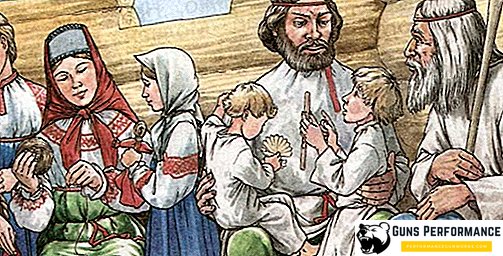
Eastern Slavs lived clan. The meeting, at which the most important issues were discussed and decided, was called the veche. In the community, elders, priests, and representatives of the military class enjoyed the greatest prestige. There was slavery, however, a serious economic role such as, for example, in ancient Rome or Greece, it did not play. Slaves were often sold to neighboring tribes or resellers.
The life of the ancient Slavs can hardly be called comfortable: they lived in small semi-dugouts of 10–20 m² each, recessed about a meter. From above such dwellings were covered with clay, the roofs were covered with straw. The Eastern Slavs had an oven as an integral part of the house, the Western Slavs had a hearth.
What did our ancestors believe and pray?
In fact, we know very little about the religious life of the pre-Slavic tribes, their rites and rituals. The first information about this dates back to the VI century - the time when our ancestors reached the borders of Byzantium. The beliefs of the Eastern Slavs contain a significant Indo-European stratum, so many of the gods of the ancient Slavs (Yarylo, Perun, Veles) have their "twins" among other Aryan peoples.
Our ancestors were pagans. The peculiarities of such an ideology are the belief in the animate nature of the world around us, in otherworldly forces that constantly influence human life, as well as the cult of the dead. The ancient Slavs worshiped the whole pantheon of supernatural beings, each of whom was "responsible" for one or another side of life. For example, Perun was the god of thunder and lightning. Among the Eastern Slavs, he was also considered the patron saint of the prince's retinue. Veles was the ruler of the other world, and Stribog - the heavenly Father God.
Great influence on the mythology and religious beliefs of our ancestors had the Celts and Iranian tribes - the nearest neighbors of the Slavs. Scientists believe that Dazhbog and Makosh borrowed from the Celtic pantheon (Dagda and Maha), and Horse and Semargl - from the Iranian. But the most interesting is that the word "god" was adopted from the Scythians and replaced the original Slavic "div."

In addition to the common Slavic gods, tribal deities existed, the value of which increased with the separation of community. We practically know nothing about them. Aspects of the faith of the Slavs of the western group are very poorly studied It is known that the Western Slavs worshiped Perun and Veles, but scientists cannot yet say more about their religious beliefs and mythologies.
Our ancestors had a cult of worshiping sculptural images of gods - idols. This is evidenced by written sources and numerous archaeological finds. Such idols were made of wood and stone. For example, Prince Vladimir - the future baptist of Russia - put in Kiev a wooden idol of Perun decorated with silver and gold. There were no temples in the form of premises, idols were installed in open areas — temples, where the rites of the ancient Slavs were performed.
The role of the priesthood in Slavic society is not entirely clear. The southern Slavs, who were under a strong Byzantine influence and very early converted to Christianity, were probably minimal. For Western Slavs, this institution had a great deal of weight, sometimes even influencing political and military decisions. Eastern Slavs also had priests - Old Russian sources call them Magi, sorcerers, veduns, sorcerers, but, most likely, this class was only at the stage of formation, which was interrupted by the adoption of Christianity. They were engaged in healers, divination, household magic.
We know that the ancient Slavs sacrificed to their gods. Usually these were animals, but from later written sources (the same “Story of Bygone Years”) we also know about human sacrifice.
Writing and calendar of ancient Slavs
Modern science believes that the Slavs' written language appears only after Cyril and Methodius, Christian preachers who created the Old Slavonic alphabet and Church Slavonic language. At first it was a verb, which Cyrillic quickly changed. Most Orthodox Slavs continue to use it today, and Catholics use the Latin alphabet.
Ведутся споры о существовании докириллической письменности, которая, по мнению некоторых исследователей, была распространена на наших землях еще до принятия христианства. Но серьезных доказательств этой теории пока не найдено.
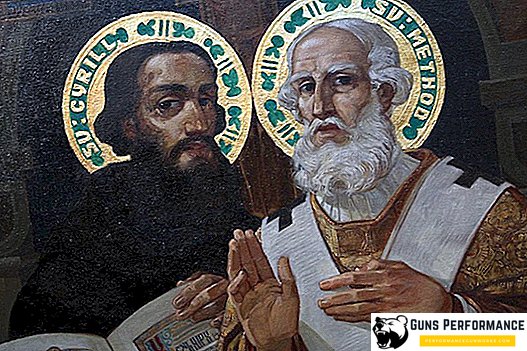
Славянский календарь окончательно сложился только к позднему Средневековью и представлял собой весьма замысловатую систему, объединяющую христианские и языческие праздники, посты, солнечные, лунные и сельскохозяйственные циклы.
О чем говорят наши гены?
Наука уже несколько столетий упорно бьется над вопросом происхождения славян и загадками их ранней истории. Но, используя традиционные методы лингвистики, археологии и антропологии, мы вряд ли сможет добиться большего.
Изучение информации, скрытой в нашей ДНК, позволяет ученым узнать о сходствах и отличиях разных славянских народов, понять, насколько серьезным было влияние соседей на них, а также пролить свет на загадку их возникновения. Используя подобные методы, можно получить настоящую генетическую карту Восточной и Центральной Европы. В фокусе внимания ученых находятся три основных маркера:
- Y-хромосома, передающаяся по отцовской линии;
- митохондриальная ДНК (мтДНК), наследуемая только по материнской линии;
- аутосомная ДНК, с состав которой входят в равной степени как гены отца, так и матери.
И хотя генофонд славянских народов довольно неоднороден, в нем присутствуют некоторые общие признаки. Например, для украинцев, русских и белоруссов характерна гаплогруппа R1a1.
Проанализировав три основных критерия, ученые пришли к выводу, что восточнославянские народы - украинцы, белорусы, а также русские, проживающие в южных и центральных областях, образуют практически единую группу. Генофонды русских и украинцев формируют два облака, которые соприкасаются друг с другом и переходят по краям без четкой границы.
Жителей сегодняшней Белоруссии можно разделить на две группы: одна часть популяции схожа с русскими, другая - с украинцами.
Все восточные славяне образуют единую совокупность на диаграмме MDS, отображающую изменчивость маркеров Y-хромосомы, что говорит об их несомненном генетическом родстве и общем происхождении. Любопытно, что у восточных славян не обнаружены гаплогруппы Q и C, типичные для монголов и хазар и практически не встречающиеся у европейского человека. И это весьма странно, учитывая многовековое владычество Золотой Орды над нашими землями.
Обособленную группу составляют жители северной части России, которым присуща финно-угорская гаплогруппа N3.
Для западных славян более характерна гаплогруппа R1b. Ближе всего к восточным славянам находятся поляки, а словаки и чехи имеют генетические признаки, характерные для немцев и других западноевропейских популяций.
Группа I распространена у южных славян на Балканах. Они образуют отдельную общность, которую можно условно разделить на западный (словенцы, хорваты и боснийцы) и восточный (македонцы и болгары) ареал. В целом они имеют много общего со своими неславянскими соседями: венграми, румынами, греками.
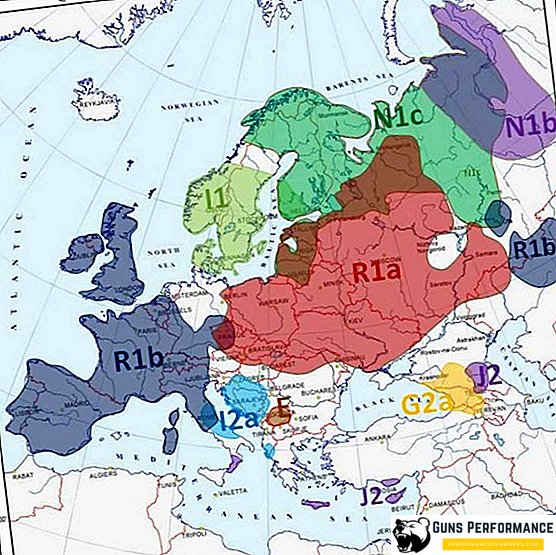
Y-гаплогруппа R1а также весьма распространена в Тибете, Индии, Иране, Афганистане, то есть на тех территориях, где тысячи лет назад расселились индоиранские народы. В некоторых материалах "патриотической" направленности данный маркер называют не иначе как "арийской гаплогруппой R1а". Несмотря на свою молодость, генетическая генеалогия, изучающая историю человечества на уровне ДНК, стала полем мистификаторов и псевдоученых. Иногда даже трудно понять, что является фактом, а где мы имеем дело с хитрой манипуляцией.
Интересно, что у восточных славян наблюдаются различия в наследовании признаков по отцовской и материнской линии. Этот факт можно объяснить разной степенью участия женщин и мужчин в колонизации восточных территорий. В основном она происходила за счет мужчин, которые выбирали себе в партнеры аборигенок.
В последние годы заметна тенденция к возрождению славянской культуры, она становится модной. Энтузиасты воссоздают праздники и обряды древних славян, возникают общины, живущие по древним обычаям. Наши предки безусловно заслуживают уважения. В тяжелейших условиях, преодолевая ярость дикой природы и борясь с иноземными нашествиями, они сумели заселить огромные просторы Евразийского континента, создав уникальную цивилизацию, принадлежностью к которой мы можем гордиться.




